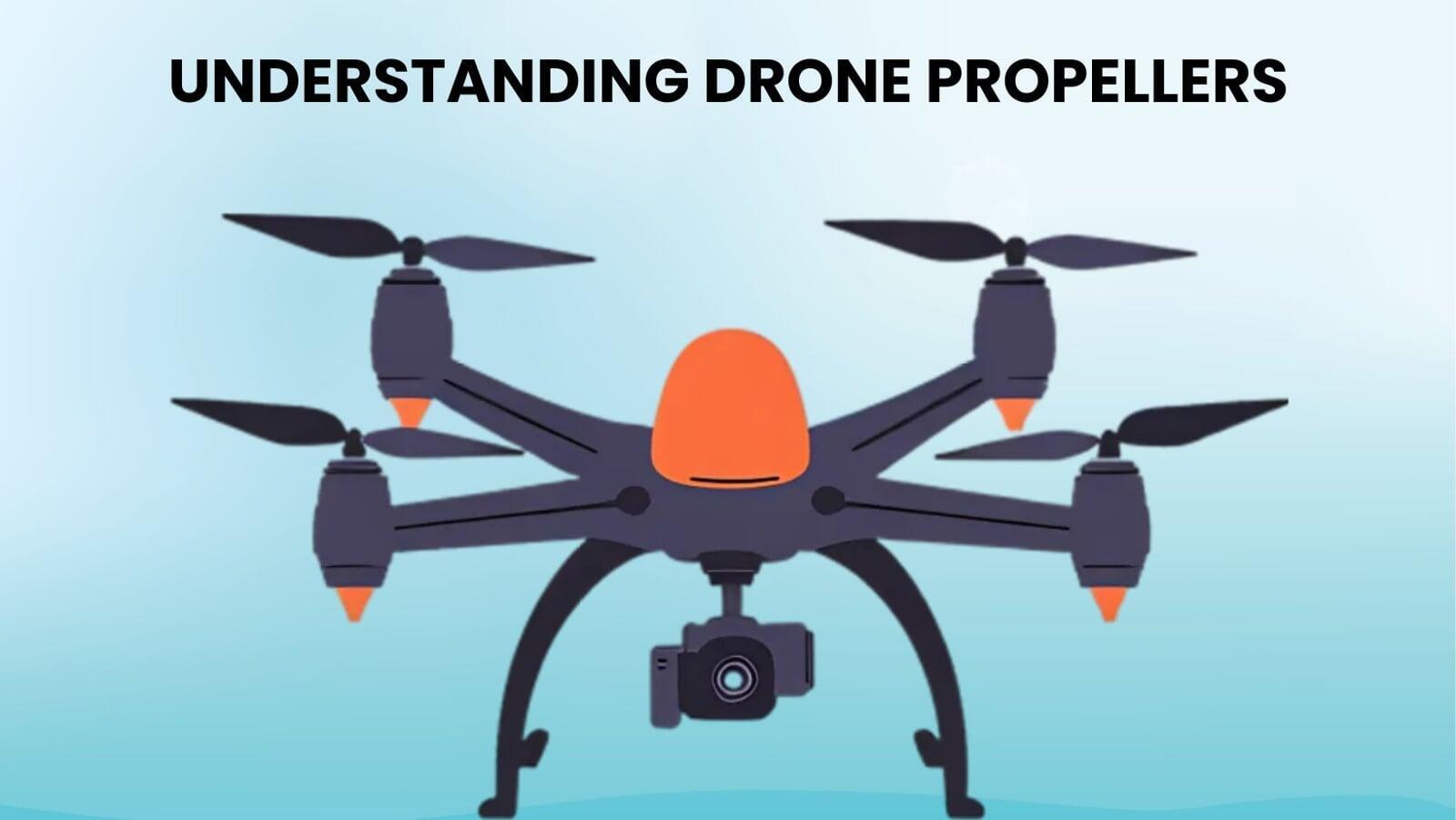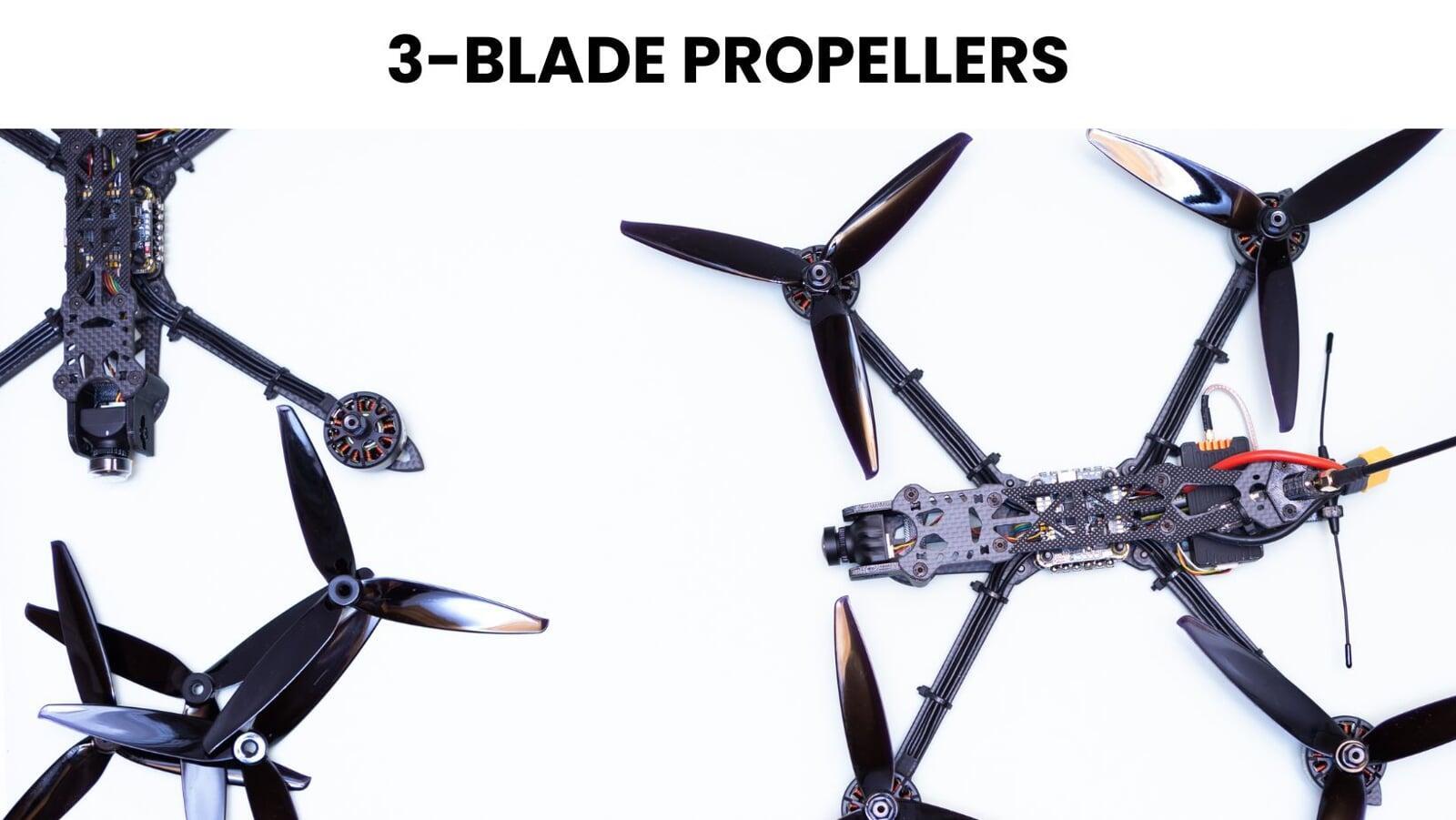Introduction
Introduction
Choosing the right propeller is one of the most important decisions when it comes to drone performance. While most beginners focus on the drone’s battery, motor, or camera, propellers are the components that directly determine lift, thrust, and control. Among the most common options, drone enthusiasts often debate between 2-blade and 3-blade propellers, both offering distinct advantages depending on flying style and purpose.
In this blog, we’ll break down how each type of propeller affects your drone’s performance, efficiency, and handling, helping you decide which one suits your needs best.
1. Understanding Drone Propellers
1. Understanding Drone Propellers
Propellers are the spinning blades that generate thrust by pushing air downward, lifting your drone upward. The number of blades directly impacts how much air is moved and how efficiently the motor can handle that movement.
- 2-blade propellers have two arms and are lighter, more efficient, and faster.
- 3-blade propellers have an extra blade, which means more surface area, better control, and stronger lift — but at the cost of efficiency and flight time.
2. 2-Blade Propellers: Lightweight and Efficient
2. 2-Blade Propellers: Lightweight and Efficient
The 2-blade propeller is the most common and efficient design for drones, especially in racing or long-distance flying. Because there are fewer blades, the motor faces less air resistance, allowing higher RPM (rotations per minute) and better energy efficiency.
a) Advantages of 2-Blade Propellers:
- Better Efficiency:
With fewer blades, there’s less drag, meaning the motor doesn’t have to work as hard. This results in longer flight times and cooler motors. - Higher Speed:
2-blade props allow for faster rotation, making them ideal for FPV racing drones or drones where top speed matters. - Longer Battery Life:
Since they draw less current, you can expect better battery performance compared to multi-blade setups. - Easier Motor Load:
The lighter design puts less stress on motors and ESCs, increasing their lifespan.
b) Disadvantages of 2-Blade Propellers:
- Less Stability:
With fewer blades cutting through the air, stability can suffer in windy conditions or during sharp maneuvers. - Reduced Thrust:
They generate less lift, which can affect performance when carrying heavy cameras or payloads. - Noisier:
2-blade props can be louder since the fewer blades create stronger air pulses per rotation.
Racing drones, endurance flights, and situations where efficiency and speed are the main goals.
3. 3-Blade Propellers: Smooth and Stable:
3. 3-Blade Propellers: Smooth and Stable:
3-blade propellers are often used by cinematic drones, FPV freestyle pilots, and heavy-lift UAVs. The extra blade provides more grip in the air, which improves stability and control — especially at low speeds or during complex flight maneuvers.
a) Advantages of 3-Blade Propellers:
- Better Stability and Control:
The third blade increases air contact, giving you smoother and more responsive control, even in tight turns. - More Thrust:
Ideal for carrying heavier payloads like cameras or sensors. They provide stronger lift, which helps in hovering and slow, precise flying. - Quieter Operation:
The air is cut more evenly, which can reduce noise and vibrations compared to 2-blade setups. - Improved Handling in Wind:
The extra blade helps maintain stability during windy or turbulent flights.
- Reduced Efficiency:
More blades mean more drag, so motors consume more power, shortening battery life. - Lower Top Speed:
They can’t reach the same maximum RPMs as 2-blade props, limiting the drone’s top speed. - Higher Motor Load:
Heavier and more aerodynamic drag increases strain on the motor and ESCs, which may require higher power components.
b) Disadvantages of 3-Blade Propellers:
Best For:
Cinematic flying, stable aerial photography, and freestyle FPV flying where control and smoothness are more important than raw speed.
4. Performance Comparison: 2-Blade vs 3-Blade:
4. Performance Comparison: 2-Blade vs 3-Blade:
Feature | 2-Blade Propeller | 3-Blade Propeller |
Thrust | Moderate | High |
Speed | Faster | Slightly Slower |
Efficiency | Excellent | Moderate |
Flight Time | Longer | Shorter |
Noise | Louder | Quieter |
Stability | Average | High |
Payload Capacity | Moderate | Higher |
Motor Load | Lower | Higher |
Ideal For | Racing, Long Range | Cinematic, Freestyle, Heavy-Lift |
This table summarizes how each propeller type performs across various flight aspects. For example, a racing pilot would likely prefer a 2-blade prop for top speed, while an aerial photographer might choose a 3-blade prop for smoother footage.
5. Choosing the Right Propeller for Your Drone:
5. Choosing the Right Propeller for Your Drone:
Selecting between 2-blade and 3-blade propellers depends on your flying goals. Here are some tips to help you decide:
- For Racing Drones:
Go with 2-blade propellers. They deliver faster speeds, better battery efficiency, and less motor strain, perfect for competitive flying. - For Cinematic Drones:
Choose 3-blade propellers. They offer smoother flight and better control, helping capture steady and professional-looking footage. - For Heavy Payloads:
3-blade propellers provide the additional lift needed to carry cameras, sensors, or agricultural sprayers. - For Long Endurance Flights:
Stick to 2-blade propellers to maximize flight time and battery efficiency. - For Windy Conditions:
3-blade propellers are better since they offer more grip and control against air turbulence.
6. Other Factors to Consider
6. Other Factors to Consider
Besides the number of blades, there are other factors that influence drone performance:
- Propeller Size (Diameter): Larger props move more air, providing more lift but requiring stronger motors.
- Pitch: This determines how far a propeller would move forward in one rotation — higher pitch means more speed but less efficiency.
- Material: Propellers are made of plastic, carbon fiber, or nylon composites. Carbon fiber offers better performance and durability but costs more.
- Motor Compatibility: Always match propeller type with your motor’s KV rating for optimal results.
Even the most efficient propeller won’t perform well if mismatched with your drone setup.
7. Maintenance and Replacement Tips:
No matter which type you use, proper maintenance is crucial for performance and safety.
- Inspect Regularly:
Check for cracks, bends, or warps after every flight. Even minor damage can cause imbalance. - Clean After Use:
Remove dust, grass, and debris to prevent vibration or motor wear. - Balance Your Props:
An unbalanced propeller can cause vibration, noise, and damage to the motors. - Replace When Needed:
Don’t fly with damaged props. Always keep spare sets for emergency replacements.
Conclusion:
Conclusion:
There’s no universal “better” choice between 2-blade and 3-blade propellers, it entirely depends on what you want from your drone.
- If you value speed, efficiency, and flight time, go for 2-blade props.
- If you need control, stability, and smooth footage, 3-blade props are the better pick.
Each propeller design brings unique advantages to different flying styles. Understanding these differences allows you to fine-tune your drone for your exact purpose — whether it’s racing across the sky, capturing cinematic shots, or exploring the world from above.




